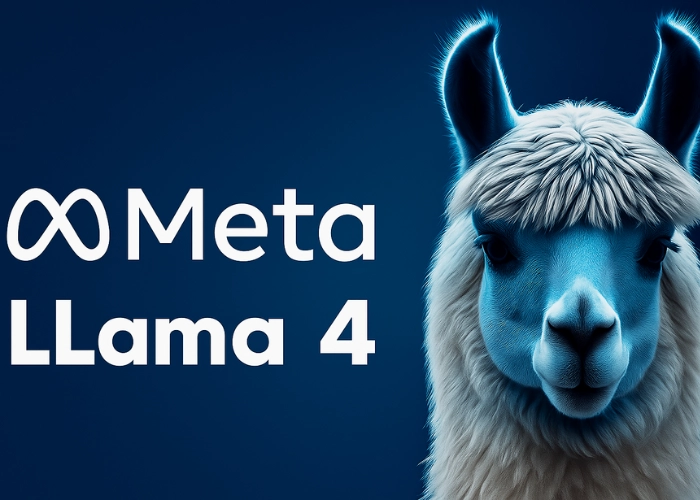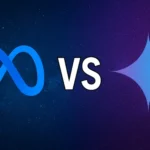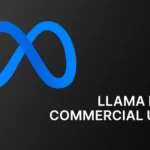Meta’s LLaMA 4 family—Scout, Maverick, and the massive Behemoth teacher—has re-shaped the open-weight landscape since its April 2025 debut. Built natively for text-image understanding and powered by an efficient Mixture of Experts (MoE) backbone, it promises extreme context windows and competitive reasoning at a fraction of GPT-class costs. This guide distills the architecture, capabilities, limits, and business impact of Meta LLaMA 4 so you can judge where it fits in your 2025 AI plans.

Why LLaMA 4 Matters in 2025
LLaMA 4 drops at a moment when enterprises crave balance: near-state-of-the-art quality, transparent weights, and sustainable TCO. Meta’s open-weight (yet strategically licensed) approach squarely targets that gap—offering Scout for single-GPU research, Maverick for high-end production, and Behemoth as an internal teacher to keep the herd learning.
Inside the Architecture—Mixture of Experts & Other Innovations
How MoE Works in LLaMA 4
Instead of firing every parameter on every token, alternating MoE layers activate a shared expert plus one routed expert. That keeps active parameters at 17 B for Scout and Maverick—even though Maverick’s total parameters soar to ~400 B thanks to its 128 expert subnetworks. The result: Behemoth-level knowledge distilled into hardware-friendly inference.
Active vs. Total—Why 17 B ≠ “Small”
• Scout 17 B active / ~109 B total / 16 experts – fits on one NVIDIA H100
• Maverick 17 B active / ~400 B total / 128 experts – GPT-class chops, lower bill
This decoupling means inference costs track the 17 B figure, while performance leans on the bigger “knowledge reservoir.”
Context Windows & iRope—Handling Up to 10 M Tokens
Scout headlines a 10 M-token theoretical window (Maverick advertises 1 M). Both were only trained to 256 K, so Meta leans on “iRope” positional handling plus inference-time attention scaling to generalize further. Internal “needle-in-a-haystack” demos impressed; community tests reveal breakdowns well below the limit—highlighting the ongoing “long-context paradox.”
Native Multimodality—Early Fusion for Text, Images & Video
Early fusion feeds text, image (and pre-training video) tokens through the same backbone from layer 1. Benchmarks back it up: Maverick hits 94.4 % on DocVQA and 90 % on ChartQA—matching or beating GPT-4o and Gemini Flash on some vision tasks. Caveats: image reasoning is currently English-only, and anecdotal tests flag occasional nuance gaps.
Real-World Performance—Benchmarks & Practical Takeaways
Reasoning & Coding Strength
• Maverick scores 85.5 % on MMLU and 77.6 % on MBPP—competitive with GPT-4-class rivals.
• Scout outperforms Gemma 3 and Mistral 3.1 at similar price points while running on a single GPU.
Multilingual Progress—and Limits
Trained on 200 languages (10× Llama 3), LLaMA 4 fine-tunes twelve major tongues fluently. Low-resource scripts and non-English image queries remain weaker.
The Long-Context Reality Check
Independent 120 K-token evaluations show Scout (~15 % retrieval accuracy) and Maverick (~28 %) trailing Gemini 2.5 Pro (90 %). Treat extreme windows as niche, not default.
Licensing, Compliance & EU Restrictions
The Llama 4 Community License grants free use but bars:
• Companies with >700 M monthly users without a separate deal.
• EU-based firms from multimodal models due to AI-Act uncertainties.
The Acceptable Use Policy blocks military, extremist, medical, and disinformation deployments, among others.
Enterprise & Developer Use Cases
Deploying Scout on One H100
Research teams run 17 B active params with 4-bit quantization on a single GPU—ideal for retrieval-augmented summarization over 250 K-token corpora or rapid prototyping.
Fine-Tuning & Customisation
LoRA/QLoRA guides let teams specialize LLaMA 4 for legal discovery, multilingual chat, or defect-image triage while keeping private data on-prem. Meta’s upcoming Llama API and OCI endpoints simplify managed scaling.
Safety, Bias & Responsible AI Features
Meta’s lightweight SFT → online RL → DPO pipeline plus aggressive prompt filtering targets balanced outputs. Promptfoo audits show Maverick beating Scout on hate-speech refusal rates, yet both still mis-handle certain violent or extremist prompts—underscoring the need for layered safeguards like Llama Guard and Prompt Guard.
Key Takeaways & Next Steps
LLaMA 4 offers a compelling mix—MoE efficiency, native vision, and permissive weights—at disruptive cost. Treat long-context claims with caution, mind licensing clauses if you’re EU-based or a mega-scale platform, and lean on fine-tuning plus external safety layers for production. Ready to experiment? Download Scout, run a pilot on a single H100, and measure ROI against your current GPT-tier spend.
FREQUENTLY ASKED QUESTIONS (FAQ)
QUESTION: Is LLaMA 4 Maverick really a 400 B-parameter model if only 17 B are active?
ANSWER: Yes. The 400 B figure counts all 128 experts’ weights. Each token visits the shared expert and one routed expert, so only 17 B parameters compute at inference, balancing knowledge depth with workable hardware costs.
QUESTION: How does iRope let Scout claim a 10 M-token context?
ANSWER: iRope removes fixed positional embeddings and rescales attention during inference, enabling length generalization far beyond the 256 K training window. It works best for retrieval-style tasks; coherence on creative prose still degrades well before 10 M tokens.
QUESTION: Can I fine-tune LLaMA 4 on medical data for diagnostics?
ANSWER: Technically possible, but the license flags “unauthorized practice of regulated professions.” You’ll need rigorous validation, domain experts, and possibly legal clearance before any clinical deployment.
QUESTION: Why are multimodal features blocked for EU companies?
ANSWER: Meta cites “regulatory uncertainties” around the EU AI Act’s rules for general-purpose AI. End-users in the EU can still interact with Meta’s own apps, but developers there must wait for clearer compliance pathways or negotiate separate terms.
QUESTION: What’s the cheapest way to use LLaMA 4 at scale?
ANSWER: For heavy workloads, run Scout or Maverick quantized with vLLM on OCI or your own H100 cluster. Their ~$0.19-0.49 per million token blended pricing undercuts proprietary GPT-class APIs by an order of magnitude.






